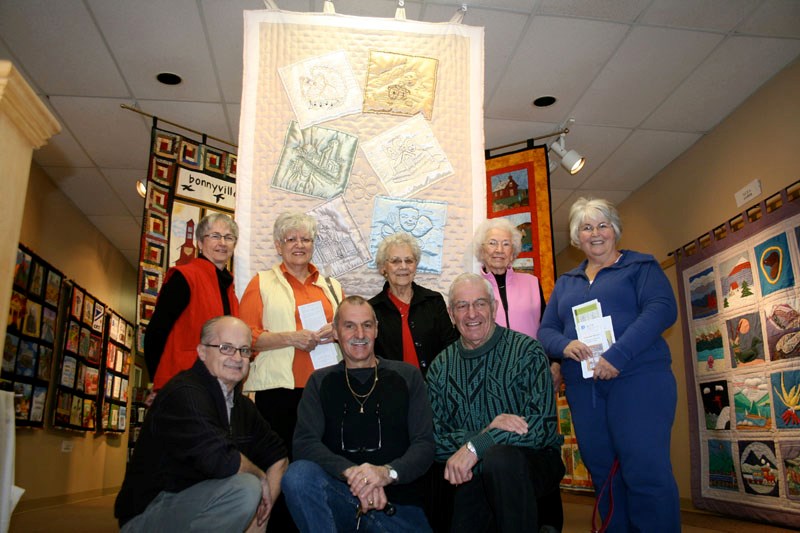Fifteen unique and vivid tapestries bring to life the history of Albertan communities, in a traveling quilt exhibit now on display at the French Cultural Centre in St. Paul.
The Centre d’arts visuels de l’Alberta (CAVA) arranged the project that invited communities across Alberta from St. Paul to Bonnyville to Lethbridge to produce a quilt that would showcase each community’s history.
Louise Belland, one of the artists behind St. Paul’s historical quilt, marveled at the work on display, noting “the craftsmanship, the ideas, the imagination, the different talents” that went into each piece.
“C’est fabuleux,” she said simply.
Twenty artists, including Belland, contributed to St. Paul’s quilt, which included six embroidered squares dedicated to six themes: religion, Métis culture, pioneers, education, health and culture.
“They found someone significant to do every square,” said Yvonne St. Arnault, who did the sewing to put the separate pieces of the quilt together. For instance, Yvonne Joly, who embroidered the Métis square, has a history steeped with Métis ties, including being the great-great-granddaughter of Marie Anne Lajimodiere, the only white woman who lived in Western Canada for 11 years among First Nations and Métis people, and being the granddaughter of a Métis woman who was a first cousin to Louis Riel.
For the square dedicated to culture, several men worked together, men that had diverse backgrounds involving farming, woodworking, fiddling and dancing. One of those men was Gabriel Côté, a priest who hails from St. Paul, whose two passions are God and the fiddle, according to information in a pamphlet on the quilt.
To St. Arnault, the quilt is special “because a lot of people in St. Paul and the surrounding area had a hand in making it a reality.”
Local artist Herman Poulin, who drew the sketches upon which the embroidered pieces were based, noted another special part of the quilt is that everything is handmade. All the uncertainties and wavering of the individual artists are preserved in the quilt, he said, explaining, “To me, all art is done by hand.”
He counted himself amazed to see all the different quilts on display, noting that all together, as many or even more than 280 people across the province would have been involved in making the quilts and weaving together a common understanding of Alberta’s history, from its First Nations past to its pioneers in wagons to its grain elevators.
The display opened on Nov. 19 and will be on exhibit at St. Paul’s French Cultural Centre until Dec. 3. The public can come and view the quilts at any time between 8:30 a.m. to 5 p.m. from Monday to Friday. Following the end of the traveling exhibit, St. Paul’s quilt will return home to be framed and kept at the cultural centre, a testament to the history of St. Paul and to those artists who strived to preserve that history in fabric and thread.



